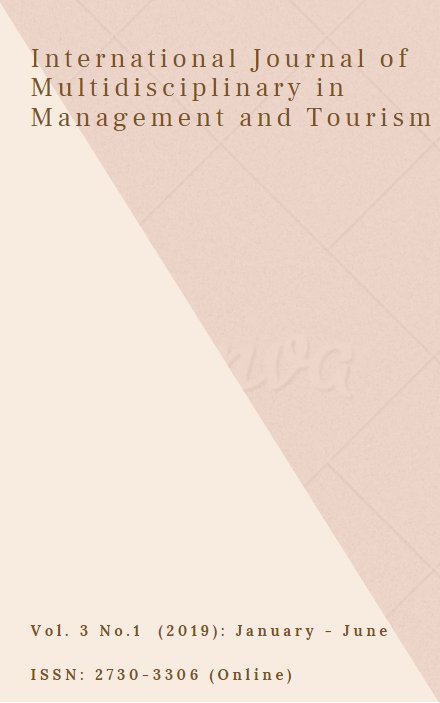A Study on Impact of Conservation Community Network on Environment and Receive Household: The Case study of Pakkading District, Bolikhamsai Province
Main Article Content
Abstract
This final project is to study on impact of Conservation Community Network on Environment and Receive household in Pakkading district, Bolikhamsai province. The purpose of this study is to investigate the impact of CCN by comparing between Village have CCN and don’t have CCN. We used the Logistic Regression, and to examine the impact of Conservation Community Network (CCN) on Receive household, and the number of samples equal to 295 households. The result of model analysis: the dependent variable which effect to change of environment are: the village have the CCN positive impact of environment, gender and household size negative impact to the environment. The dependent variable which effect to receive households are: the village have CCN, gender, land, loan size positive impact to receive households, occupation and number of going to forest negative impact to receive households.
Article Details
References
BLX (2015). The Conservation Community Network (CCN) in the Bolikhamsai
D., Douglas R., Joshua, M., MacDaniel&Dennis, A., Frito. (2006). Factors influencing farmers' participation in forestry management programs: A case study from Haiti. Aubum, United State: ELSEVIER.
Eivin Roskaft and Bjorn P. Kaltenborn Jafari R. Kideghesh. (ເລກທີ.ວັນທີ.). 2006.
Flora Manyama and Eivin Roskaft. (2014). Factors affecting attitudes of local people toward the red-billed Quelea (Quelea quelea) in Kondoa District, Tanzania.Academic Journal International Journal of Biodiversity and Conservation.
Hedemark. (2010). Developing a New Model for Sustainable Fianancing for Conservation Areas Based on Payment for Ecosystem Services (PES) in Bolikhamxay.Wildlife Conservation Sociaty - Lao PDR Program.
Jafari R. Kideghesh Eivin Roskaft and Bjorn P. Kaltenborn. (2006). Factors influencing conservation attitudes of local people in Western Serengati, Tanzania.Springer Science + Business Media B.V. 2006.
Province, Agriculture and Forestry Division, Bolikhamsai Province.
Thida Sam. (2011). Community-based forest management.New York: IUCN.
Vongkhamheng. (2015). Phouchomvoy Provincial Protected Area: A Biodiversity Baseline Assessment.Lao Wildlife Conservation Association (Lao WCA).
W. H, Greene. (1997). Econometric analysis.New York University.
Wildlife Conservation Sociaty. (2006). Significant Wildlife and Wildlife Habitats of Bolikhamxay Province.WCS.
Yamane T. (1967). Statistics: an introductory analysis.

